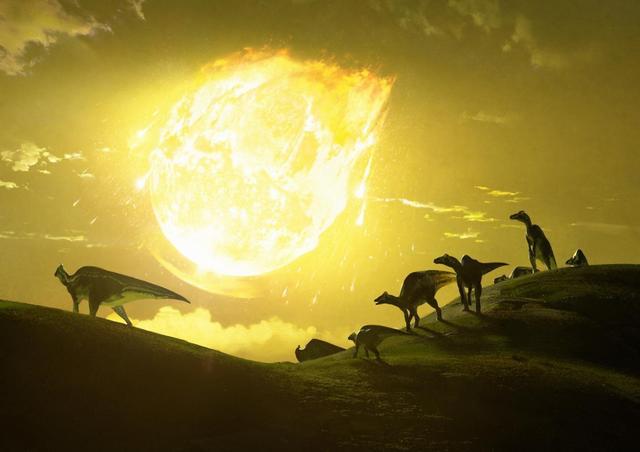Study: Dinosaur Killing Asteroid Hit Earth at "Deadliest Possible" Angle
A new study suggests the asteroid that killed almost all the dinosaurs struck Earth at the "deadliest possible" angle.
Scientists believe the asteroid hit Earth about 66 million years ago near what is today Mexico's Yucatán Peninsula. The force of the massive crash is estimated to have been equal to the strength of about 10 billion nuclear bombs.
The climate-changing event is blamed for causing the disappearance of more than 70 percent of plant and animal life. All dinosaurs that were not bird-like died out.
What has remained a mystery for scientists, however, is whether the asteroid strike was a direct hit. The new study provides evidence that the strike resulted in the worst kind of crash for the dinosaurs.
Researchers examined data on the structure of the 200-kilometer-wide crater in Mexico where scientists believe the asteroid hit. They attempted to recreate the asteroid event on computers.
The results, recently published in Nature Communications, showed that the asteroid struck Earth at an angle of about 60 degrees.
As a result of the angle, an especially large amount of climate-changing gases would have been released quickly into the atmosphere.
The lead researcher was Gareth Collins, of Britain's Imperial College London.

"For the dinosaurs, the worst-case scenario is exactly what happened," he said in a statement. He added that the release of gases into the atmosphere started a series of events that led to the permanent disappearance of the dinosaurs.
The release "was likely worsened by the fact that it struck at one of the deadliest possible angles," Collins said. If the asteroid had hit head-on or at lower angles, less material would have been released into the atmosphere, he added.
Scientists believe the massive release of gases and chemicals into the atmosphere led to a period of extreme cold, also known as a "nuclear winter." This was caused by large amounts of sulphur particles that stayed in the air, blocking heat from the sun. The asteroid strike is also believed to have caused widespread wildfires, earthquakes and ocean waves, or tsunamis.
The researchers said their models are the first to reproduce the whole event — from the first hit to the moment when the final crater was formed.
The findings seem to disprove a long-standing theory that the asteroid moved toward Earth from the southeast. The scientists said recreations based on the crater's structure showed the asteroid coming from the southwest.
The study could lead to a greater understanding about how craters are formed in general. The modeling suggested, for example, that rocks "rebound" to fill in beneath the crater during its final formation. The researchers said the findings suggest that large craters can be formed in a matter or minutes.
Scientists continue to question how some living things were able to survive the asteroid event. Gareth Collins said the new study clearly suggests the strike resulted in "a very bad day for the dinosaurs." He added: "It makes it even more remarkable that life survived and recovered as rapidly as it did."
I'm Bryan Lynn.












